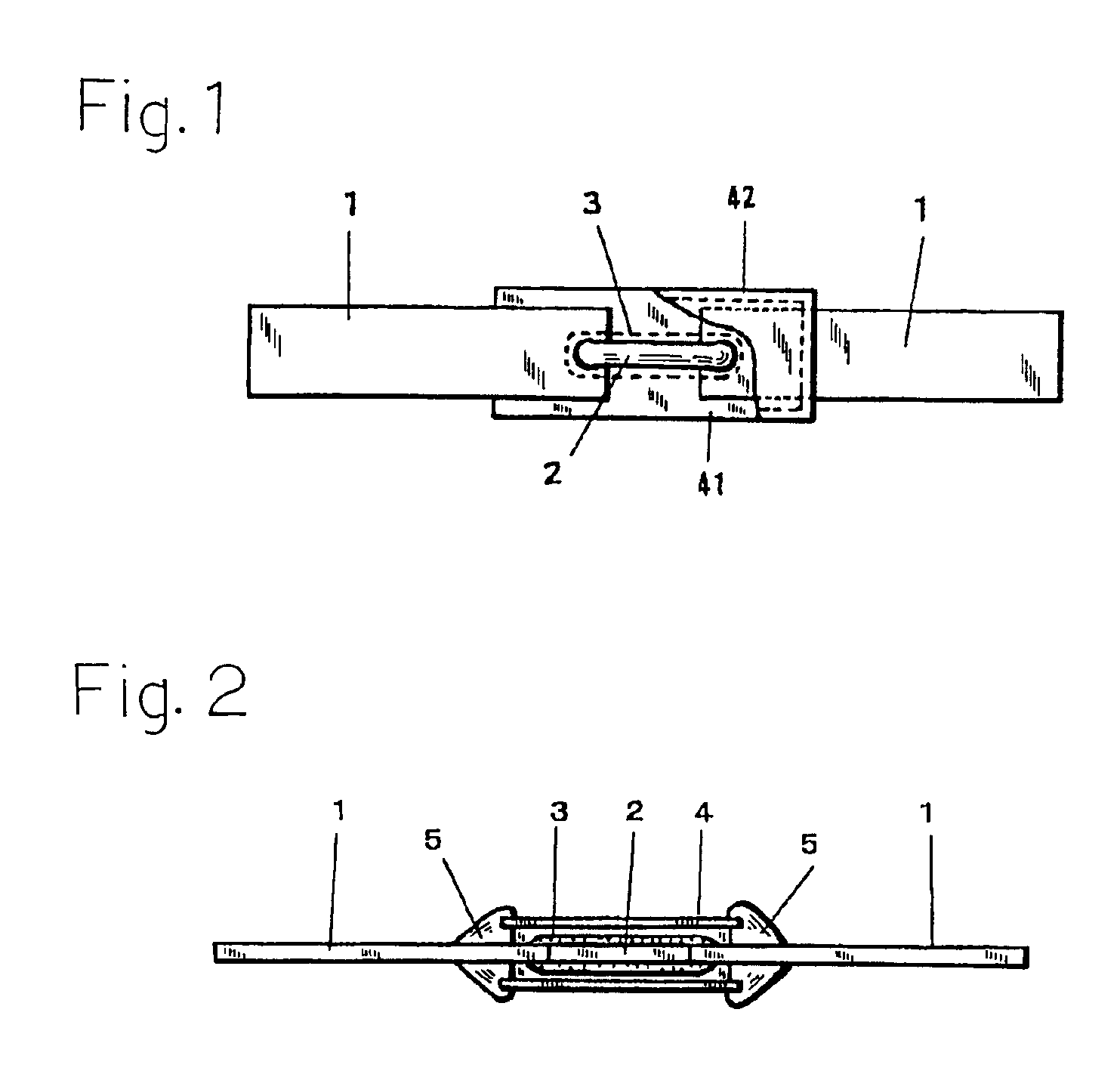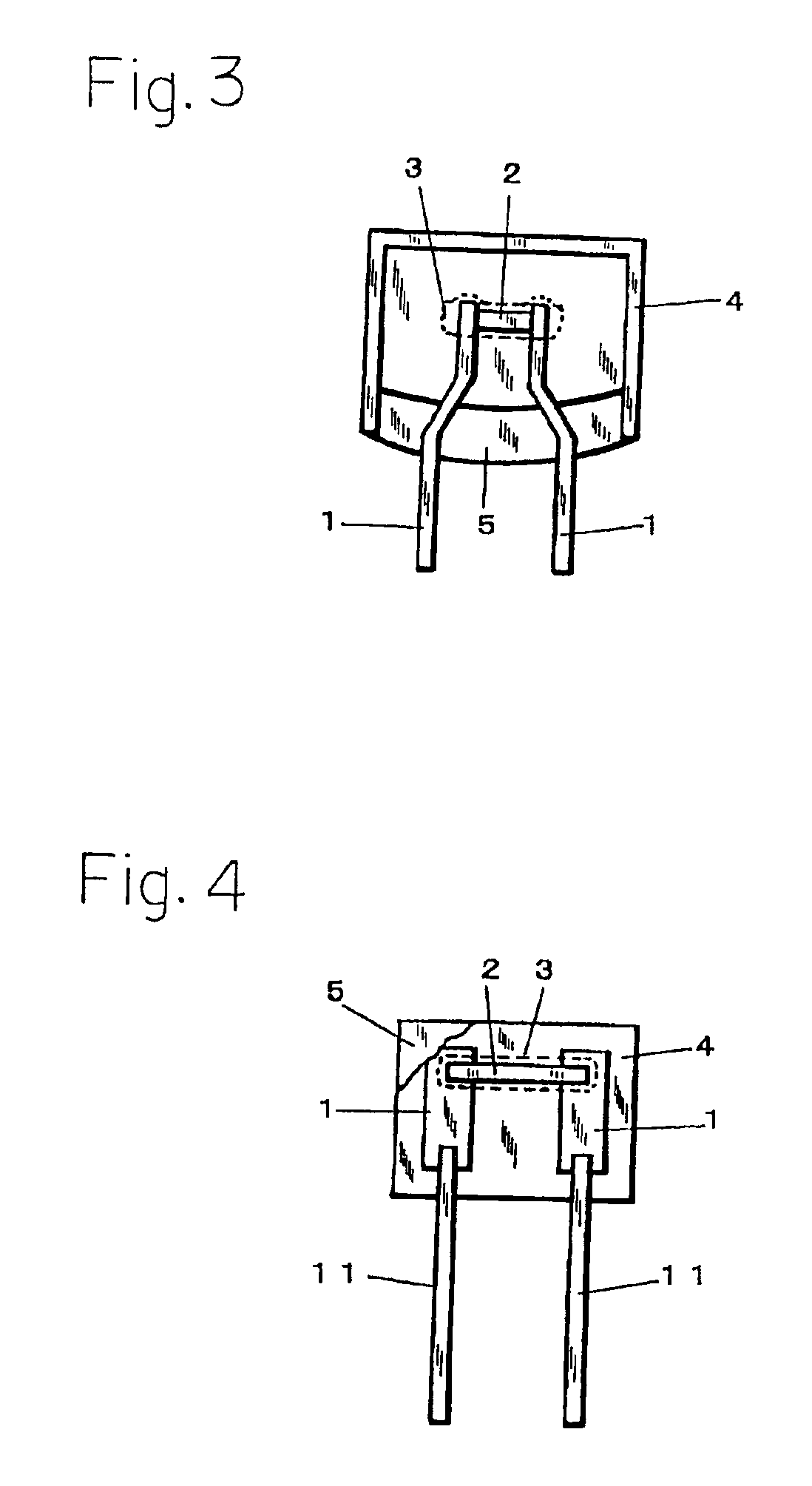Alloy type thermal fuse and wire member for a thermal fuse element
a technology of thermal fuse element and wire member, which is applied in the direction of basic electric elements, heating/cooling contact switches, emergency protection devices, etc., can solve the problems of inability to meet, the operation performance of the fuse element is inevitably changed with age, and the fuse element cannot be guaranteed to perform a predetermined operation performance, etc., to achieve low level, suppress the dispersion of operating temperature, and the effect of sufficient ductility
- Summary
- Abstract
- Description
- Claims
- Application Information
AI Technical Summary
Benefits of technology
Problems solved by technology
Method used
Image
Examples
example 1
[0053]A base material of an alloy composition of 43% Sn, 6% Sb, and the balance Bi was drawn into a wire of 300 μmφ in diameter. The draw-down ratio per dice was 6.5%, and the drawing speed was 45 m / min. In the wire, no breakage occurred.
[0054]The specific resistance of the wire was measured. As a result, the specific resistance was 37 μΩ·cm.
[0055]The liquidus temperature of the wire was 148° C., and the solid-liquid coexisting region temperature width ΔT was 3° C.
[0056]Substrate type thermal fuses were produced, and the change in resistance of a fuse element in heat cycles was measured. As a result, the change in resistance was not observed, and the thermal fuses exhibited stable thermal resistance.
[0057]The operating temperatures of the thermal fuses were 147° C.±0.5° C., and the dispersion of the temperature was very small.
example 2
[0058]A base material of an alloy composition of 43% Sn, 3% Sb, and the balance Bi was drawn into a wire of 300 μmφ in diameter. The draw-down ratio per dice was 6.5%, and the drawing speed was 45 m / min. In the wire, no breakage occurred.
[0059]The specific resistance of the wire was measured. As a result, the specific resistance was 36 μΩ·cm.
[0060]The liquidus temperature of the wire was 144° C., and the solid-liquid coexisting region temperature width ΔT was 3° C.
[0061]Substrate type thermal fuses were produced, and the change in resistance of a fuse element in heat cycles was measured. As a result, the change in resistance was not observed, and the thermal fuses exhibited stable thermal resistance.
[0062]The operating temperatures of the thermal fuses were 143° C.±0.5° C., and the dispersion of the temperature was very small.
example 3
[0063]A base material of an alloy composition of 43% Sn, 9% Sb, and the balance Bi was drawn into a wire of 300 μmφ in diameter. The draw-down ratio per dice was 6.5%, and the drawing speed was 45 m / min. In the wire, no breakage occurred.
[0064]The specific resistance of the wire was measured. As a result, the specific resistance was 39 μΩ·cm.
[0065]The liquidus temperature of the wire was 152° C., and the solid-liquid coexisting region temperature width ΔT was 4° C.
[0066]Substrate type thermal fuses were produced, and the change in resistance of a fuse element in heat cycles was measured. As a result, the change in resistance was not observed, and the thermal fuses exhibited stable thermal resistance.
[0067]The operating temperatures of the thermal fuses were 150° C.±1° C., and the dispersion of the temperature was very small.
PUM
| Property | Measurement | Unit |
|---|---|---|
| diameter | aaaaa | aaaaa |
| operating temperature | aaaaa | aaaaa |
| operating temperature | aaaaa | aaaaa |
Abstract
Description
Claims
Application Information
 Login to View More
Login to View More - R&D
- Intellectual Property
- Life Sciences
- Materials
- Tech Scout
- Unparalleled Data Quality
- Higher Quality Content
- 60% Fewer Hallucinations
Browse by: Latest US Patents, China's latest patents, Technical Efficacy Thesaurus, Application Domain, Technology Topic, Popular Technical Reports.
© 2025 PatSnap. All rights reserved.Legal|Privacy policy|Modern Slavery Act Transparency Statement|Sitemap|About US| Contact US: help@patsnap.com



